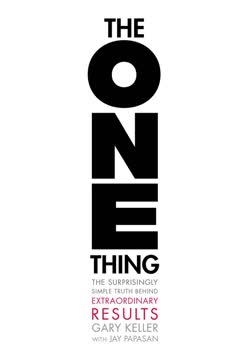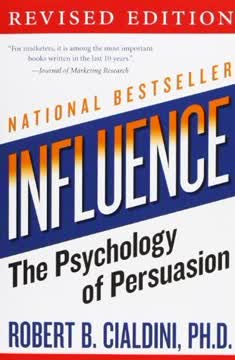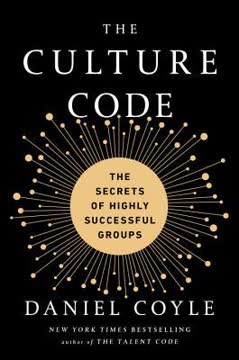نکات کلیدی
1. گیمیفیکیشن از مکانیکهای بازی برای افزایش مشارکت و حل مشکلات استفاده میکند
"گیمیفیکیشن فرآیند جذب مخاطبان با استفاده از بهترین برنامههای وفاداری، طراحی بازی و اقتصاد رفتاری است."
مکانیکهای بازی مشارکت را افزایش میدهند. گیمیفیکیشن از عناصری مانند امتیاز، نشان، سطح، جدول ردهبندی و جوایز برای ایجاد سیستمهای تسلط و پیشرفت استفاده میکند. این مکانیکها به انگیزههای درونی و بیرونی متکی هستند و تجربهها را لذتبخشتر و جذابتر میکنند. با بهکارگیری اصول طراحی بازی در زمینههای غیر بازی، سازمانها میتوانند:
- مشارکت و حضور کاربران را افزایش دهند
- رفتارهای مطلوب را تحریک کنند
- مشکلات پیچیده را از طریق جمعسپاری حل کنند
- نوآوری و خلاقیت را به حرکت درآورند
- یادگیری و توسعه مهارتها را بهبود بخشند
کاربردهای دنیای واقعی متنوع هستند. شرکتهایی مانند نایک، SAP و IBM با موفقیت از گیمیفیکیشن برای بهبود محصولات، افزایش عملکرد کارکنان و تحریک نوآوری استفاده کردهاند. حتی نهادهای دولتی و سازمانهای غیرانتفاعی نیز از گیمیفیکیشن برای همه چیز از سیاستهای عمومی تا تحقیقات علمی بهره میبرند.
2. استراتژیهای موفق گیمیفیکیشن بر بازخورد، دوستان و سرگرمی تمرکز دارند
"زمانی که تجربهها برای کاربر حاضر و واقعی باشند، جذابیت و نگهداری حاصل از آن قویترین خواهد بود."
سه F مشارکت را افزایش میدهند. استراتژیهای موفق گیمیفیکیشن شامل سه عنصر کلیدی هستند:
- بازخورد: ارائه اطلاعات واضح و مکرر به کاربران درباره پیشرفت آنها
- دوستان: ایجاد ارتباطات اجتماعی و رقابت
- سرگرمی: ایجاد تجربههای لذتبخش و مفرح
طراحی برای احساسات مثبت. گیمیفیکیشن مؤثر به احساسات مثبت مانند موفقیت، ارتباط اجتماعی و لذت متکی است. این امر انگیزه درونی ایجاد میکند، جایی که کاربران به دلیل پاداشدهی خود فعالیت درگیر میشوند. جوایز بیرونی مانند امتیاز یا جوایز میتوانند مکمل باشند، اما نباید محرک اصلی باشند.
تعادل کلیدی است. رقابت بیش از حد میتواند دلسردکننده باشد، در حالی که چالش ناکافی منجر به خستگی میشود. بهترین سیستمها تعادل مناسبی از چالش، تعامل اجتماعی و بازخورد پاداشدهنده را پیدا میکنند تا کاربران را در درازمدت مشغول نگه دارند.
3. گیمیفیکیشن میتواند عملکرد کارکنان را تقویت کرده و نوآوری را پرورش دهد
"شرکتهایی مانند اپل که به ازای هر کارمند 400,000 دلار سود ثبت کردهاند، همچنین تا 125,000 دلار هزینه میکنند زمانی که یک کارمند ماهر ترک میکند—که اغلب منجر به از دست دادن تا 65 درصد از بهرهوری برای یک سال کامل در طول انتقال میشود."
مشارکت کارکنان حیاتی است. گیمیفیکیشن ابزارهای قدرتمندی برای افزایش انگیزه، بهرهوری و نگهداری کارکنان ارائه میدهد:
- سیستمهای ردیابی عملکرد و بازخورد
- مسیرهای توسعه مهارت و تسلط
- ابزارهای شناسایی همکاران و همکاری اجتماعی
- چالشهای نوآوری و بازارهای ایده
داستانهای موفقیت دنیای واقعی فراوانند. شرکتهایی مانند Nextjump شاهد بهبودهای چشمگیری در سلامت و بهرهوری کارکنان خود از طریق برنامههای سلامتی گیمیفیکیشن شدهاند. SAP و IBM از گیمیفیکیشن برای تحریک نوآوری استفاده میکنند، با کارکنانی که برای توسعه ایدهها و راهحلهای جدید رقابت میکنند.
تفاوتهای نسلی را در نظر بگیرید. نسل هزاره، که با بازیهای ویدیویی بزرگ شدهاند، بهویژه به محیطهای کاری گیمیفیکیشن شده پاسخ مثبت میدهند. ارائه بازخورد مکرر، پیشرفت واضح و فرصتهای دستیابی معنادار میتواند به جذب و نگهداری استعدادهای برتر در نسلهای مختلف کمک کند.
4. استخدام، آموزش و توسعه از رویکردهای گیمیفیکیشن بهرهمند میشوند
"ارتش آمریکا به مؤثرترین پروژه استخدامی در تاریخ نظامی تبدیل شد."
گیمیفیکیشن استخدام استعداد را متحول میکند. سازمانها از رویکردهای گیمیفیکیشن برای:
- جذب کاندیداهای واجد شرایط (مانند معماهای بیلبورد گوگل)
- ارزیابی مهارتها از طریق چالشهای مبتنی بر بازی
- ارائه پیشنمایشهای واقعی شغلی (مانند بازی Reveal لورآل)
- درگیر کردن استخدامهای بالقوه در فرهنگ و ارزشهای شرکت
آموزش مؤثرتر و لذتبخشتر میشود. برنامههای آموزشی گیمیفیکیشن شده ارائه میدهند:
- افزایش مشارکت و نرخ تکمیل
- حفظ بهتر دانش از طریق یادگیری فعال
- محیطهای ایمن برای تمرین مهارتها و ارتکاب اشتباهات
- ردیابی پیشرفت و مسیرهای یادگیری شخصیسازی شده
مسیرهای توسعه واضحتر میشوند. گیمیفیکیشن میتواند مسیر پیشرفت شغلی را ترسیم کند و به کارکنان کمک کند تا رشد خود را در سازمان تجسم کنند و آنها را به کسب مهارتهای جدید ترغیب کند.
5. برنامههای سلامت و رفاه کارکنان با عناصر گیمیفیکیشن رونق میگیرند
"Nextjump شاهد بهبود عملکرد تیمهای خود در ساعات کاری و همچنین افزایش سرعت کار آنها بوده است."
سلامت بر بهرهوری تأثیر میگذارد. رفاه کارکنان بهطور مستقیم بر عملکرد شرکت از طریق:
- کاهش غیبت و هزینههای بهداشتی
- افزایش انرژی و عملکرد شناختی
- بهبود روحیه و رضایت شغلی
گیمیفیکیشن مشارکت را تحریک میکند. برنامههای سنتی سلامت اغلب با مشارکت پایین مواجه هستند. رویکردهای گیمیفیکیشن نرخهای مشارکت بسیار بالاتری را با:
- سرگرمکننده و اجتماعی کردن فعالیتهای سلامتی
- ارائه اهداف واضح و ردیابی پیشرفت
- ارائه جوایز و شناسایی برای رفتارهای سالم
داستانهای موفقیت جذاب هستند. شرکتهایی مانند Nextjump نتایج قابل توجهی را به دست آوردهاند:
- 80% از کارکنان بهطور منظم ورزش میکنند (در مقایسه با 33% استفاده از باشگاه در جمعیت عمومی)
- بهبود عملکرد و بهرهوری تیم
- کاهش هزینههای بهداشتی و کاهش ترک شغل
6. گیمیفیکیشن از طریق سر و صداهای مصرفکننده عبور کرده و مشارکت بلندمدت را حفظ میکند
"اگر تلاش عمدی برای درگیر کردن آنها بهطور منظم نکنید، احتمالاً علاقه خود را به محصول یا خدمات شما از دست خواهند داد."
توجه کمیاب است. در دنیای پر از حواسپرتی امروز، جذب و حفظ توجه مشتری چالشبرانگیز است. گیمیفیکیشن با:
- ایجاد تجربههای جذاب و تعاملی
- متکی بودن به انگیزههای درونی
- ارائه اهداف واضح و بازخورد
- امکان اشتراکگذاری اجتماعی و رقابت
حلقههای مشارکت نگهداری را تحریک میکنند. تجربههای موفق گیمیفیکیشن چرخههای virtuous از:
- احساس انگیزشی
- فراخوان اجتماعی به عمل
- دوباره درگیر کردن کاربر
- پیشرفت و جوایز قابل مشاهده
استراتژیهای بلندمدت حیاتی هستند. برای حفظ مشارکت:
- یک "گند" اصلی (عمل تکراری) تعریف کنید
- محتوای تازه نگه دارید
- از مشوقهای معنادار استفاده کنید
- برای تسلط و رشد شخصی طراحی کنید
- فرصتهای یادگیری مداوم ایجاد کنید
7. جمعسپاری و گیمیفیکیشن برای تحریک نوآوری و توسعه محصول همافزایی میکنند
"Foldit نشان داد که مردم مایلند برای یک هدف مشترک همکاری کنند و از قدرت محاسباتی مشترک خود برای حل مشکلات واقعی استفاده کنند."
هوش جمعی را به کار بگیرید. جمعسپاری گیمیفیکیشن شده به سازمانها این امکان را میدهد که:
- مشکلات پیچیده را حل کنند (مانند تا شدن پروتئین Foldit)
- ایدههای نوآورانه تولید کنند (مانند چالشهای InnoCentive)
- محصولات جدید توسعه دهند (مانند Kickstarter)
- دادهها و محتوای زمان واقعی جمعآوری کنند (مانند iReport سیانان)
مکانیکهای بازی مشارکت را تحریک میکنند. پلتفرمهای موفق جمعسپاری از:
- اهداف و چالشهای واضح
- ردیابی پیشرفت و جدول ردهبندی
- جوایز شناسایی و وضعیت
- ابزارهای همکاری و عناصر اجتماعی استفاده میکنند
مزایا فراتر از راهحلهاست. جمعسپاری گیمیفیکیشن شده همچنین:
- تعامل و وفاداری برند را ایجاد میکند
- استعدادها و استخدامهای بالقوه را شناسایی میکند
- حس مالکیت را در میان شرکتکنندگان ایجاد میکند
- تحقیقات و بینشهای بازار ارزشمندی تولید میکند
آخرین بهروزرسانی::
FAQ
What's The Gamification Revolution about?
- Core Concept: The book explores how gamification—applying game mechanics in non-game contexts—can enhance engagement in business. It discusses how organizations can leverage game design principles to motivate employees and customers.
- Strategic Importance: It emphasizes that without employee and customer engagement, even the best strategies will fail. The authors argue that gamification is essential for modern businesses to thrive in a competitive landscape.
- Real-World Applications: The book provides numerous case studies from various industries, illustrating successful implementations of gamification strategies.
Why should I read The Gamification Revolution?
- Practical Insights: The book offers actionable insights for leaders in marketing, HR, and strategy on how to implement gamification effectively. It serves as a guide for organizations looking to innovate and engage their workforce.
- Expert Opinions: It includes perspectives from industry leaders and case studies that validate the effectiveness of gamification. This makes it a credible resource for understanding the impact of gamification on business success.
- Future-Proofing: As the workforce evolves, understanding gamification can help organizations adapt to new employee expectations, particularly from millennials who value engagement and feedback.
What are the key takeaways of The Gamification Revolution?
- Engagement is Key: The book stresses that engagement is the most valuable resource employees and customers can provide. Without it, businesses risk failure regardless of their strategies.
- Gamification Techniques: It outlines various gamification techniques, such as feedback loops, competition, and social interaction, that can enhance employee performance and customer loyalty.
- Cultural Shift: The authors highlight the need for a cultural shift within organizations to embrace gamification as a core strategy for innovation and engagement.
What are the best quotes from The Gamification Revolution and what do they mean?
- “Without employee and customer engagement, the best laid strategies and tactics are doomed to fail.” This quote underscores the critical importance of engagement in achieving business objectives.
- “The world will not return to the calm, focused ways of the past.” This reflects the reality of modern distractions and the necessity for businesses to adapt their strategies to maintain engagement.
- “Gamification presents the best tools humanity has ever invented to create and sustain engagement in people.” This emphasizes the transformative potential of gamification in driving engagement and innovation.
How does The Gamification Revolution define gamification?
- Definition: Gamification is defined as the process of engaging audiences by leveraging the best of loyalty programs, game design, and behavioral economics. It aims to drive user engagement in various contexts.
- Mechanics: The book discusses key game mechanics such as points, badges, levels, and leaderboards that can be used to motivate and engage users.
- Application: It highlights that gamification can be applied in almost any work environment, making it a versatile tool for enhancing employee and customer experiences.
What are some examples of successful gamification in business from The Gamification Revolution?
- FoxMeyer Drugs: The book discusses how FoxMeyer failed to engage employees during a software transition, leading to its bankruptcy. This serves as a cautionary tale about the importance of engagement.
- McDonald's Monopoly Game: This example illustrates how McDonald's used gamification to drive customer engagement and increase sales during promotional periods. The game created excitement and loyalty among customers.
- America's Army Game: The U.S. Army used this game to improve recruitment by providing a realistic experience of military life, which helped attract and prepare recruits effectively.
How can organizations implement gamification according to The Gamification Revolution?
- Identify Objectives: Organizations should start by clearly defining their goals for gamification, whether it's improving employee performance, enhancing customer loyalty, or driving innovation.
- Choose Appropriate Mechanics: The book suggests selecting game mechanics that align with the organization's culture and objectives, such as points systems, leaderboards, or challenges.
- Foster a Supportive Environment: Successful implementation requires a culture that supports experimentation and feedback, allowing employees to engage with the gamified systems meaningfully.
What are the three primary drivers of employee engagement discussed in The Gamification Revolution?
- Feedback: Providing regular and constructive feedback helps employees understand their performance and areas for improvement. This is crucial for maintaining motivation and engagement.
- Friends: Encouraging social connections among employees fosters collaboration and a sense of community, which can enhance overall job satisfaction and performance.
- Fun: Incorporating elements of fun into the workplace can make tasks more enjoyable and engaging, leading to higher productivity and morale.
How does The Gamification Revolution suggest measuring the success of gamification initiatives?
- Engagement Metrics: Organizations should track engagement metrics such as participation rates, user feedback, and overall satisfaction to assess the effectiveness of gamification strategies.
- Performance Outcomes: Measuring changes in performance indicators, such as sales figures or productivity levels, can help determine the impact of gamification on business objectives.
- Continuous Improvement: The book emphasizes the importance of iterating on gamification strategies based on data and feedback to ensure ongoing effectiveness and relevance.
What challenges might organizations face when implementing gamification according to The Gamification Revolution?
- Cultural Resistance: Employees may resist changes to traditional processes, especially if they perceive gamification as trivializing their work. Overcoming this resistance requires clear communication and buy-in from leadership.
- Design Complexity: Creating effective gamification systems can be complex, requiring careful consideration of game mechanics and user experience. Organizations must invest time and resources to design meaningful experiences.
- Sustainability: Maintaining engagement over time can be challenging, as initial excitement may wane. Organizations need to continuously innovate and refresh their gamification strategies to keep employees engaged.
How does The Gamification Revolution address the challenges of employee engagement?
- Understanding Employee Needs: The book emphasizes the importance of recognizing what motivates employees, such as recognition, purpose, and community. By addressing these needs, organizations can foster a more engaged workforce.
- Gamified Feedback Systems: It discusses the implementation of gamified feedback systems that provide instant recognition and rewards for employee performance. This approach can enhance motivation and job satisfaction.
- Creating a Culture of Engagement: The book advocates for building a culture where engagement is prioritized, and employees feel empowered to contribute. This can lead to improved retention and overall organizational performance.
What role does technology play in gamification according to The Gamification Revolution?
- Enabling Engagement: Technology facilitates the implementation of gamification strategies by providing platforms for tracking progress, awarding points, and fostering competition. It allows organizations to create interactive and engaging experiences.
- Data-Driven Insights: The book highlights how technology can be used to gather data on user behavior, helping organizations refine their gamification strategies. This data-driven approach ensures that gamified experiences remain relevant and effective.
- Accessibility and Reach: With the rise of mobile devices and social media, gamification can reach a broader audience. The book emphasizes the importance of being where users are and leveraging technology to enhance engagement.
نقد و بررسی
کتاب انقلاب بازیسازی نقدهای متفاوتی دریافت کرده است و بهطور میانگین امتیاز 3.7 از 5 را کسب کرده است. خوانندگان از معرفی اصول بازیسازی و مثالهای واقعی آن قدردانی میکنند، اما از نبود برنامههای اجرایی ساختاریافته انتقاد دارند. برخی تجربهی خواندن بازیسازیشدهی کتاب را سطحی میدانند، در حالی که دیگران از آن لذت میبرند. این کتاب بهخاطر بینشهایش در بهکارگیری مکانیکهای بازی در تجارت، تعامل کارکنان و ارتباط با مشتری تحسین میشود. با این حال، برخی از منتقدان دقت برخی آمارها را زیر سوال میبرند و بخشهایی از کتاب را دشوار برای درک یا خستهکننده میدانند.
Similar Books















